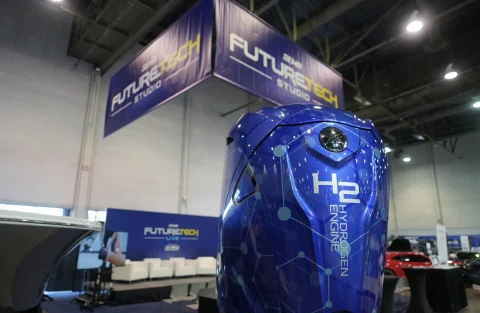Hydrogen vehicles were not common in the past. Yet Hollywood legend Jack Nicholson became their early champion. In 1978, he made a bold move. He drove a hydrogen-converted Chevrolet through Hollywood’s streets. This decision would impact environmental innovation for decades.
The Hollywood Icon’s Green Initiative

Environmental consciousness was barely emerging in Hollywood during the 1970s. Jack Nicholson stood apart from his peers. He chose to drive a hydrogen-powered vehicle before it was fashionable. His decision came years before other celebrities embraced environmental causes. Ed Begley Jr., Tom Hanks, and Peter Horton would later follow his example. Nicholson’s modified Chevrolet represented more than a personal choice. It became a powerful statement about automotive technology’s future.
Technical Innovation and Environmental Impact
Key technical achievements of Jack Nicholson’s hydrogen vehicle:
- Engineers converted a standard ICE engine to run purely on hydrogen fuel
- The team integrated a solar-powered system for hydrogen production
- They developed specialized solutions for storing hydrogen safely
- Mechanics implemented new systems for delivering fuel efficiently
- The vehicle achieved nearly zero emissions during operation
Hydrogen Production and Sustainability

The innovative aspects that made this project stand out:
- Solar power generated all necessary hydrogen fuel
- The production cycle maintained complete sustainability
- Vehicle operation produced zero harmful emissions
- Energy conversion reached impressive efficiency levels
- The system worked with existing infrastructure elements
Public Advocacy and Media Coverage
Nicholson didn’t just own an innovative vehicle. He became its strongest advocate. His celebrity status helped spread awareness. He brought environmental issues into mainstream conversations. Media appearances became regular events. He spoke about hydrogen technology to various audiences. Complex concepts became simpler through his explanations. The public began understanding alternative fuel benefits. His influence reached beyond Hollywood’s boundaries. Environmental discussions gained new momentum through his efforts.
The 1978 Hydrogen Conversion Project

The Chevrolet conversion project broke new ground. Engineers faced multiple technical challenges. They succeeded in modifying existing engine technology. The team proved that revolutionary change was possible. They showed how existing vehicles could transform. Standard cars could become environmentally friendly. The project demonstrated practical applications of hydrogen technology. This approach made clean energy solutions seem more achievable. Infrastructure changes seemed less daunting. Public interest in alternative fuels grew stronger.
Celebrity Impact on Environmental Awareness
Nicholson created a new model for celebrity advocacy. His influence went beyond simple endorsements. He actively engaged with technical aspects. The public gained better understanding through his efforts. He bridged gaps between complex technology and public knowledge. Other celebrities began following his example. Environmental advocacy gained new respect. His approach showed how public figures could create change. Technical solutions became more accessible. The public began embracing environmental technologies.
Historical Context and Future Impact

The journey from 1978 continues today. Modern fuel cell vehicles build on Nicholson’s early efforts. Technology has evolved significantly since then. BMW’s Hydrogen 7 emerged decades later. Similar principles still guide hydrogen vehicle development. Progress faces ongoing challenges. The automotive industry keeps exploring alternatives. Nicholson’s early adoption provides valuable lessons. His experience shows technology advancement takes time. Patient development yields better results.
Environmental Legacy
Jack Nicholson’s commitment to hydrogen technology remains relevant. His early efforts still influence environmental discussions. Celebrity environmental activism grew from his example. Public opinion continues shifting toward sustainable solutions. Policy discussions reference his pioneering work. His forward-thinking approach inspired many changes. Current debates about alternative fuels reflect his influence. His vision helped shape modern environmental movements. New generations learn from his early adoption. His legacy encourages continued innovation.
Looking Forward

The automotive industry continues exploring alternative fuels. Jack Nicholson’s early advocacy provides important perspectives. His enthusiasm for hydrogen technology remains inspiring. Transportation faces ongoing environmental challenges. Political discussions about clean energy continue evolving. The story of his hydrogen car teaches valuable lessons. Long-term vision proves essential for environmental progress. Technology adoption requires patience and persistence. His example shows how individual actions create lasting change. Future innovations build on past achievements.
Did You Know? Toyota Mirai: Hydrogen Fuel Cell Innovation













